Peter Clarke was a pre-war territorial soldier based in West Croydon; In May 1939 he enlisted as a medic in 133 Field Ambulance, Royal Army Medical Corps (TA). On 2 September the same year the unit was mobilised and Peter was ‘called up’ for active service with his fellow medics. The Field Ambulance was deployed to France in October 1939 and was involved in the Dunkirk campaign in the summer of 1940. Peter did not cross the channel with his unit as he was under nineteen years of age and therefore ineligible to deploy overseas.
While he waited for his nineteenth birthday to come Peter was posted as a medic to a Royal Artillery Anti Aircraft Regiment, he remained at Gravesend until June 1941. Peter then had an early brush with flying when he was detached to RAF Manston to work alongside the RAF medical services manning their ambulances by day and night. Peter then served with RAMC detachments at Leigh on Sea, Colchester and Epping. In the September of 1941 Peter had successfully applied for RAF Aircrew Selection and subsequently passed and was accepted for flying duties with the RAF. Unfortunately the Army that autumn stopped all transfers to the RAF.
In the spring of 1942 Peter volunteered for service as an Army Glider Pilot. He reported for training at the Glider Pilot Regiment depot Tilshead on 18 July 1942. After a short stay on Salisbury Plain he was posted to 29 Elementary Flying Training School (EFTS) at Clyffe Pypard near RAF Lyneham. Training complete Peter concluded his initial flying training:
‘E.F.T.S. Course concluded with "Above Average" Assessments as Pilot and Navigator (hours:- Dual day 51.05 Dual night 7.10 First Pilot day 47.00 Night 2.55 TOTAL 108.10)’
Peter moved north to 4 Glider Training School (GTS) at RAF Kidlington, he completed his conversion to gliders without incident in January 1943:
'G.T.S. Course concluded with "Above the Average" assessment as a Glider Pilot (hours:- Single engined day Dual 4.50 Solo 5.00 Glider Dual day 11.35 Dual night 1.15 Solo day 26.30 Solo night 1.45 TOTAL 50.55)'
On 9 March 1943 Peter was awarded the Army Flying Badge (Wings) and promoted to Sergeant in the Glider Pilot Regiment. He then moved to the Heavy Glider Conversion Unit (HGCU) at RAF Brize Norton. Here he and his comrades were introduced to the Horsa Glider. Peter quickly got to grips with the Horsa spending just over two weeks at Brize. On completion of the course he was graded ‘Above Average’. His flying log book shows how quickly he adapted to the new aircraft between 8-20 April 1943:
'Glider Pilot (hours: - Dual day 3.15 & night 0.5 1st pilot day 3.10 & night .40 2nd pilot day 2.50 Night 0.50 TOTAL hours -11.35).'
May 1943 was a no flying month but Peter spent the first week of June flying at the Glider Pilot Exercise Unit back on Salisbury Plain at Shrewton. After a few weeks at Shrewton Peter was posted to 6 Squadron Glider Pilot Regiment. He embarked for Algiers with his new squadron on 19 June, the troop ship docked in North Africa on 26 June. The first leg of the journey complete Peter and his fellow Glider Pilots boarded a US Navy troopship and sailed for Philipville. On arrival the journey continued by road, this time by Bedford 3-tonner over the Atlas Mountains. At the end of a very long and dusty road journey the convoy reached the US Airstrip at Kairouan. On arrival Peter learned of the Sicily Landings and of the losses incurred by 1 Airlanding Brigade during Operation LADBROKE.
While in Tunisia Peter added the CG-4A Waco Glider to his list of types flown, he and his comrades were converted onto the Waco by US Army Flight Instructors. He later flew as a passenger on two Albermarle sorties. His training on the Waco included some testing night flying, casting off from a C47 Dakota Tug aircraft at 4,000 feet, using moon light to navigate and then landing on flare markers. Peter’s log book for the period 22 Jul – 20 Aug 43 has the following totals:
'Hours:-Day Dual 0.50 1st Pilot 2.35 2nd Pilot 2.35 Night Dual 1.00 1st Pilot 3.40 2nd pilot 1.40 Flights included remote releases from 4000 feet landing by moonlight onto two flares.'
The capitulation of Italy on 3 September resulted in 1st Airborne Division being called forward for new operations. Peter embarked on a British troopship on 11 September in Bizerta, the GPR was to be employed in the Infantry role. His destination along with the remainder of 1st Battalion of the Glider Pilot Regiment was the Italian mainland port of Taranto, the battalion docked 13 September 1943. Peter was stationed outside Taranto until early October when the squadron moved to Gioia Del Colle and Putignano. There was little flying to be had and Peter logged no flying hours for September, October or November. He did however manage to ‘cadge’ a twenty-five minute flight as second pilot in a captured Klemm trainer. Peter flew with an RAF Flight Lieutenant from 242 Squadron RAF, he remembered the aircraft as similar in type and performance to the Miles Magister that many Glider Pilots had learned to fly in at EFTS. Peter was finally shipped home from Italy in a British troopship that left Italy on 19 November, arriving back in England in time for Christmas on 9 December 1943.
On 15 December Peter was posted to the Glider Pilot Exercise Unit (GPEU) at RAF Thruxton near Andover, he was reintroduced to the delights of flying the Hotspur glider. After Christmas Peter completed refresher training on the Horsa glider, the towing aircraft at the time were underpowered Whitleys. Peter moved on 27 February 1944 to the Operational Training Unit at RAF Leicester East. Over the next few weeks Peter was introduced to the Short Stirling as a tug aircraft. With hours logged flying the Horsa as part of a combination with the Stirling under his belt Peter was posted to G Squadron GPR at RAF Fairford. Again flying the Horsa in company with the Stirling he was detached to one of RAF Greenham Common’s satellite airfield at Hampstead Norris in early April 1944. There was much talk of the coming invasion; speculation was ended when Peter was briefed for Operation Overlord. Peter was destined to miss the Normandy landings as his co-pilot was taken ill on D -1 with Jaundice and Glandular fever. There were no reserve pilots available; Peter missed the long awaited opportunity to gain operational experience with 6 Airborne Division on the eastern flank of the Normandy landings.
In spite of missing out on Normandy Peter was promoted to war substantive Staff Sergeant on 26 June 1944. The summer that followed Normandy was a long and frustrating one for Peter and the majority of Airborne forces. Between June and September 1944 he remembers being briefed for at least half a dozen operations in France that did not materialise. (see GPR Regimental History written by Claude Smith, p.101, and Glider Pilots at Arnhem pp.18-27). In September 1944 Peter was among Glider Pilots briefed for Operation Comet (equivalent of MARKET GARDEN but by 1st Airborne Division alone) but this was cancelled shortly before take off at RAF Manston (see Regimental History p101 and Mike Peters & Luuk Buist's Glider Pilots at Arnhem p28-39). Following the abortive Comet operation three crews (including that of Peter and his second pilot - Sergeant Arnold Phillips) were detached at short notice from G Squadron to fly with F Squadron from RAF Broadwell (between Burford and Lechlade) on Operation Market Garden.
On Sunday 17 September Peter and Sergeant Arnold Phillips took off from Broadwell, their destination was Landing Zone ‘S’ north of Oosterbeek. On board Peter’s glider were 23 Mortar Platoon (plus handcarts) of 1st Battalion The Border Regiment. Towed by a Dakota (KG432) of 575 Squadron RAF commanded by Warrant Officer S Parker. At this point Peter was a very experienced pilot:
‘The flight to Wolfheze on September 17 1944 was my 242nd glider landing, 483rd aircraft landing and 250th solo landing (total flying hours - 260 hours 55 minutes). My next previous flights, four in number, as first pilot, had taken place in a Horsa at Leicester East on August 11 1944. Sgt Phillips, my second pilot, never flew with me in a Horsa glider prior to our flight to Arnhem on 17 September, although he did so in a Tiger Moth.’
After an uneventful flight Peter landed his Horsa at 1330 hours – duration of flight was 3 hours 20 minutes.
‘In 2006 having contacted two men from 1st Border Regiment we carried in our glider, I had confirmation that their party consisted of an officer and 12 NCO’s and men + six handcarts loaded with mortars and mortar bombs. We disembarked from the glider some 150 yards from their rendezvous (the location of which was not told me in advance!).’
Later that evening Peter was dug in on the eastern side of Landing Zone ‘L’, 2 Wing GPR were deployed as part of the 1 Airlanding Brigade perimeter. The next night Peter was involved in the GPR move south to Oosterbeek. From about day 3 of the battle Peter was responsible for the establishment and manning of an ad-hoc Regtl Aid Post (RAP) serving the men of 7th Battalion KOSB and the Glider Pilots of 2 Wing who were holding the northern perimeter. The RAP was located in a Dutch house on Oranjeweg. Peter’s second pilot Sergeant Arnold Phillips was Killed in Action on 25 September – the circumstances of his death are unknown. Arnold Phillips is buried in the Commonwealth War Graves Commission cemetery in Oosterbeek. In correspondence Peter later added further detail to his memories of Arnhem, especially of the Airlanding Infantrymen that flew as his load (see article below).
Peter did not escape Arnhem in spite of being given the option to withdraw with the remnants of 1st British Airborne Division during Operation Berlin. On the night of 25 September as hundreds made for the river bank he remained in the house on Oranjeweg caring for four wounded soldiers. Consequently he was taken prisoner on 26 September and moved to Krone Wilhelm III Barracks in Apeldoorn.
On the evening of 30 September in company with two other Glider Pilots (Fred Eaton & Bill Blanthorn) Peter escaped the Germans. They were recaptured at dusk on 1 October, 13 miles North West of their point of departure, the Germans, who were hunting deer, returned them to captivity. From October onwards Peter was a POW, spending three weeks in Stalag XI B at Fallingbostel in northern Germany. He was then moved east to Stalag VIIIC at Sagan in Poland. Peter was on the move early in 1945; setting off under guard on 9 February he and hundreds of POWs were marched west ahead of the advancing Red Army. After six days in a revier (minor hospital), Peter considered himself fortunate in being able to join a group of a some dozen prisoners under two elderly guards and continued walking west and then north, finally arriving at a Stalag at Brunswick on 26 March. On 11 April, he joined a group of prisoners walking east, but on Friday 13 April, after walking for some 330 miles in all, Peter was finally liberated by the American 2nd Army in the village of Horsingen, east of Helmstedt.
He flew home five days later in Dakota FZ 669 piloted by Squadron Leader Jack.T.Reed then of 437 Squadron RCAF, who, as a Flight Lieutenant with 512 Squadron RAF had, on 17th September 1944, towed a glider from Broadwell to Holland in Dakota KG 558, just 10 minutes ahead of Peter's own departure from the same location! Peter has no record of their flight time from Hildesheim to RAF Wing in Buckinghamshire but very happy memories of his first bath there after a gap of seven months.
As a returning POW Peter was granted six weeks leave on double rations. He never returned to flying duties and was demobbed from the Army at Finmere on 28 April 1946 following which he returned to complete the last month of his articles as a prospective Solicitor. After satisfying his examiners, he was finally admitted to the profession in July 1947 and in October 1987 had the privilege of completing the legal work that gave birth to then newly re-constituted Museum of Army Flying at Middle Wallop, the home of today's Army Air Corps, successors (inter alia) to the Glider Pilot Regiment.
Peter Clarke remains an active member of the Glider Pilot Regimental Association; he is a regular speaker on Army Air Corps, Senior Command and Leadership Course Battlefield Studies of Arnhem.
Further Reading
Claude Smith, History of The Glider Pilot Regiment (2008), Pen & Sword Mike Peters & Luuk Buist, Glider Pilots at Arnhem (2009), Pen and Sword Stuart Eastwood, When Dragons Flew: Illustrated History of the 1st Battalion the Border Regiment, 1939-45 (1994), Silver Link PublishingCompiled by Mike Peters in consultation with Peter Clark
Read More
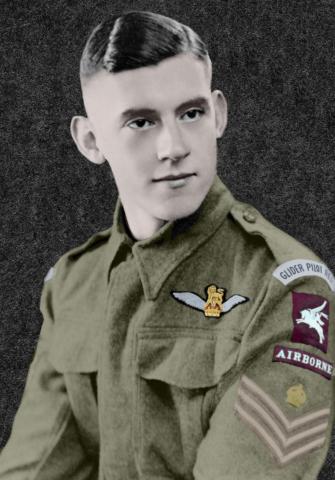
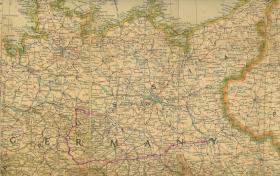
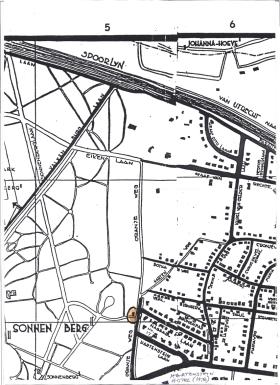
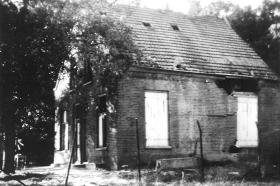
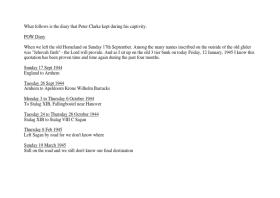
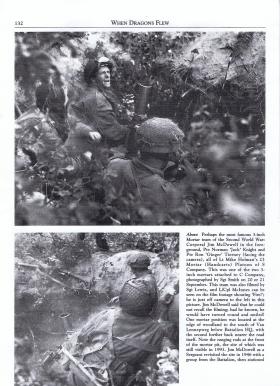
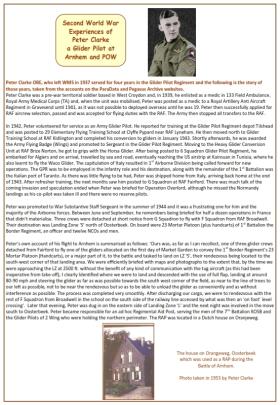
Latest Comments
There are currently no comments for this content.
Add Comment
In order to add comments you must be registered with ParaData.
If you are currently a ParaData member please login.
If you are not currently a ParaData member but wish to get involved please register.